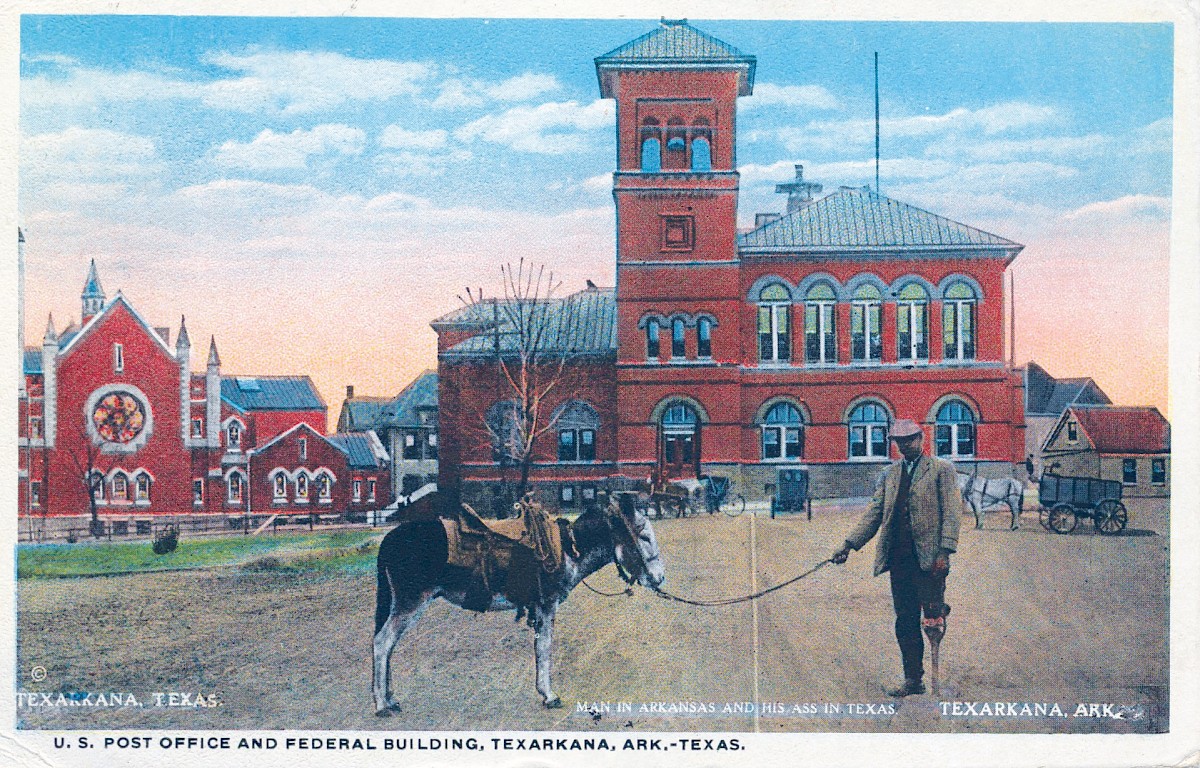The Man and His Donkey
In the 1890s the U.S. Congress made the mailing of “penny” post cards legal. Their use became an instant success—specifically among business and vacation travelers on railroads all over the nation. These postcards were very slow, but they were an economical means of communicating. Basically, it was a penny for the card and a penny for the stamp. In a week or two, the kinfolks in Chicago could get word on their family traveling to Waco, or the Texarkana businessman could send a note to a client in St. Louis thanking him for his recent order.
The use of the penny postcard became even more popular as automobiles became less expensive in the mid-1920s. Travel increased at an unbelievable pace and Texarkana, USA was a transportation and travel hub.
Thousands and thousands of penny postcards, with their pictures of flowers, parks, magnificent homes, public buildings, cartoons, jokes, and all sorts of attractive and interesting subjects, were sold in Union Station and the cafes, bookstores, drug stores and soda fountains on both sides of the city.
One of those cards was a stand-out. It was unusual, funny, and even over-the-line with a lot of people. It featured a photo of a man and his donkey standing on the Arkansas and Texas border in front of the U.S. Courthouse and Post Office. The caption proclaimed, “Man in Arkansas and His Ass in Texas.” Eventually, the card was offered with the man standing in either Arkansas or in Texas—neither side to be offended.
That card was the most popular, most purchased, most mailed in the history of the many hundreds of thousands of Texarkana postcards sold. It was the only Texarkana card that held a copyright. Of course, that right expired fifty years after its publishing ca. 1912.
The story goes… the man in the original photo was a Native American from Broken Bow, Oklahoma. He had a peg leg and the donkey was his animal. The two were posed in front of the old red brick post office and federal court that was constructed ca. 1888. In the background a horse is seen drinking from the public water fountain. A horse and wagon are visible on the right side of the photo. The elegant Central Christian Church building dominates the left side of the photo. The peace and quiet of that day is quite evident by the lack of any street activity. The man and his donkey very prominently occupy the foreground of the photo.
The photo was updated and modernized, to some extent, over the years. The new Post Office and Federal Court Building replaced the old facility in 1933. Remarkedly, the original photo continued to be used. It was printed, marketed, sold, and mailed for 50-60 years. There have been many variations of this card. Some were real photos, some artist renderings, some cartoons, and even a few recent real photos. They have all attempted to replicate that original depiction and its success in gaining public acceptance. Many later variations were commercial successes, but none have recaptured the attention and connection that the postcard of the man and his ass did so very, very well for a very, very long period of time. ![]()
THE EVOLUTION OF “The Man and His Donkey” POSTCARD
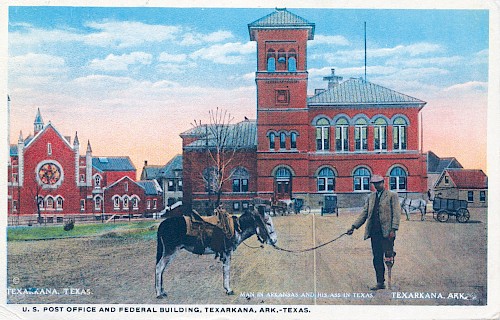
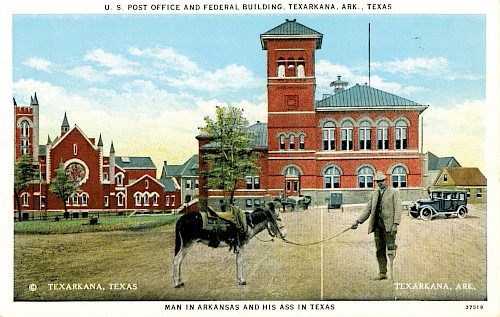
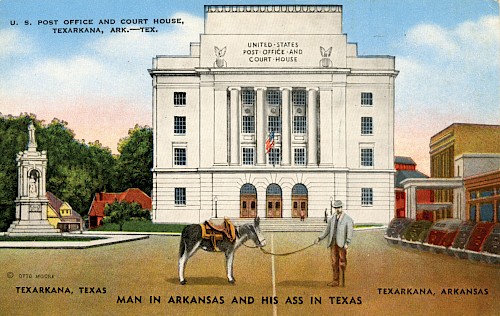
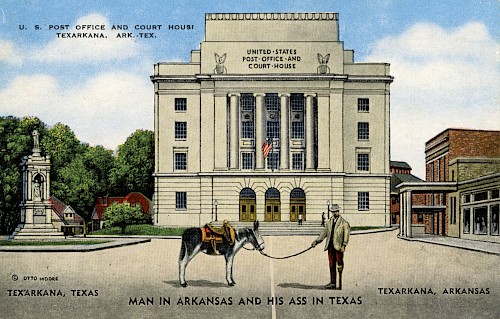
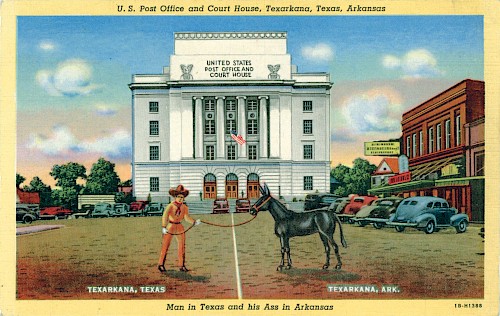
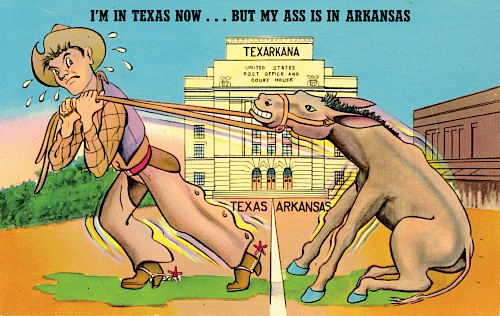
POSTCARDS COURTESY OF Horace Shipp
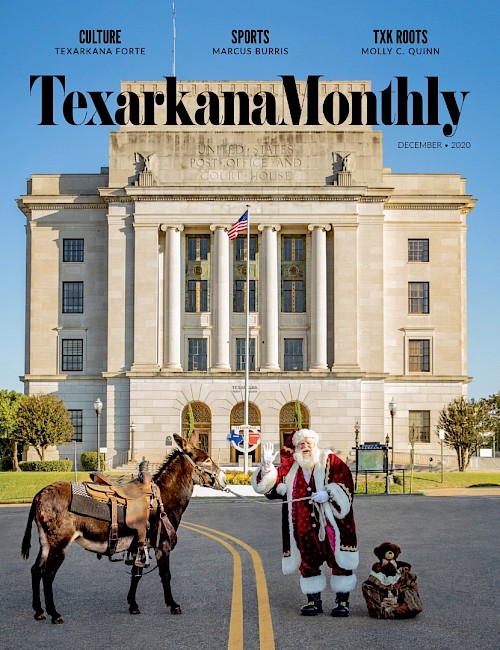
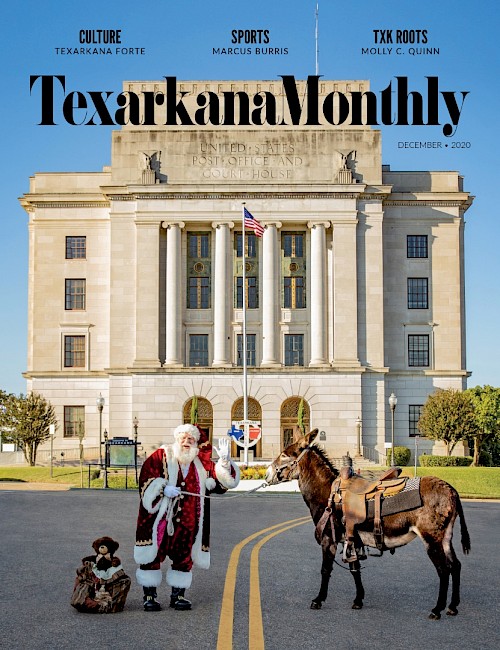
Texarkana Monthly’s iconic remake would not have been possible without the talents of Molly Kendrick and Michael Ulmer. The history revealed in these images throughout the years is priceless. As the downtown landscape has changed, each new remake of this image is proof that our sense of humor, community comradery and love for our cities has been constant. So, whether you find your “ass” in Texas or Arkansas, we can all stand together and say “there’s no place like home.”

